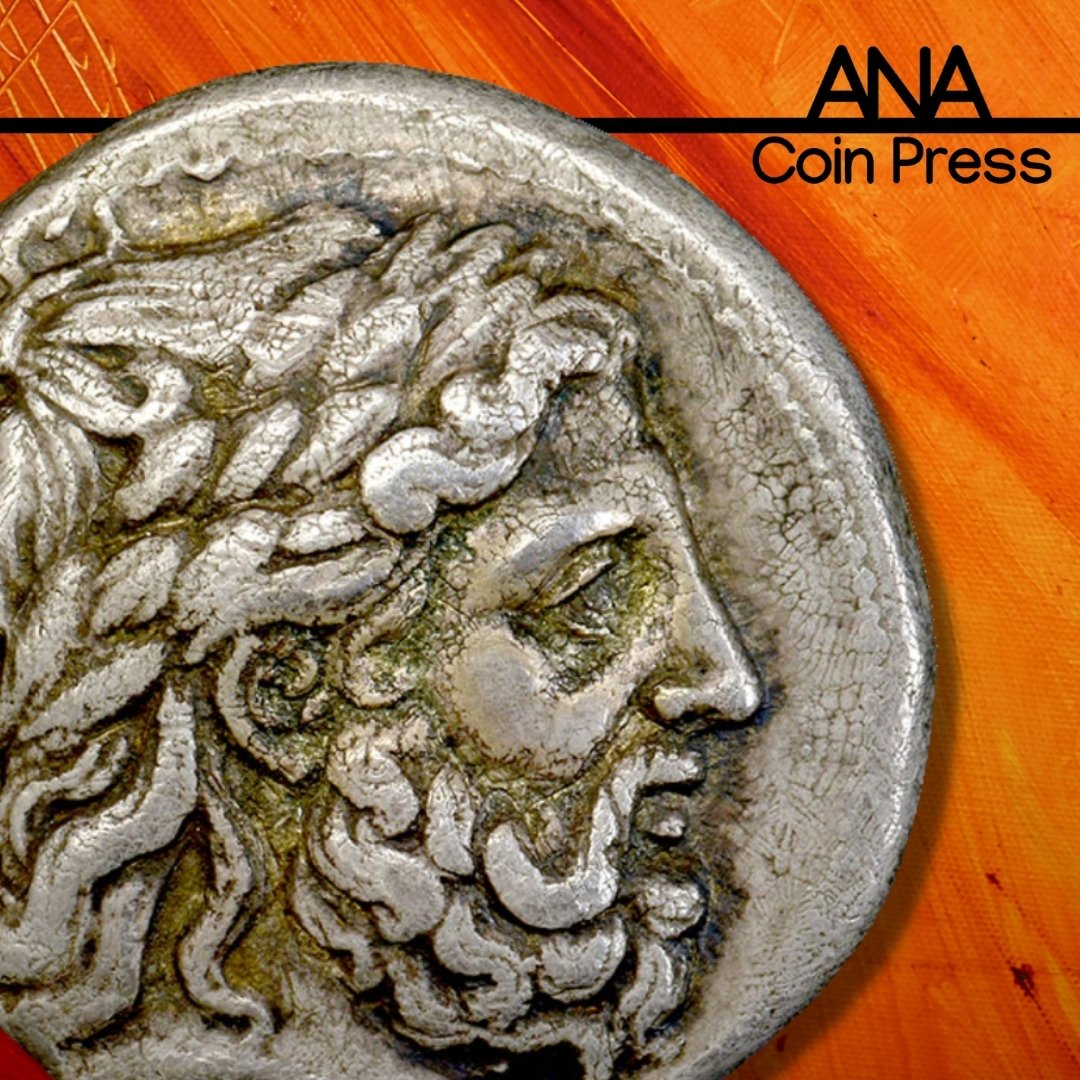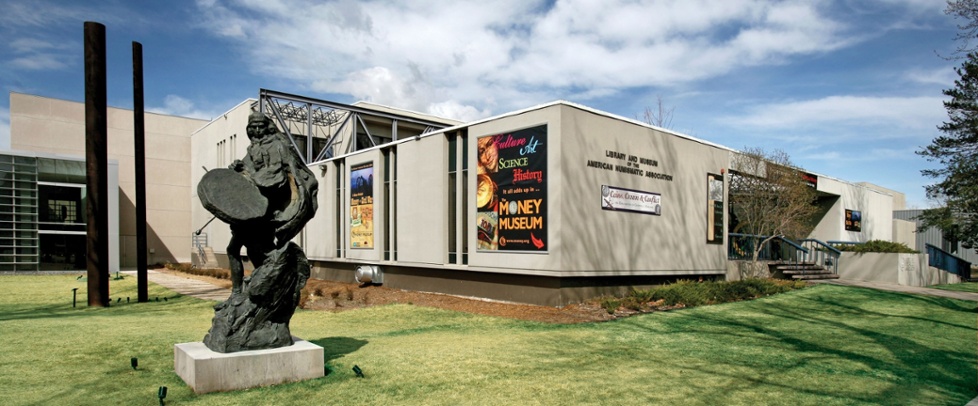Pros and Cons of Collecting Ancient Coins
U.S. and world coins represent two of the three most common and expansive areas of numismatics, with ancients comprising the third. And of these three numismatic groups, ancient coins are arguably the broadest; they include coins that span millennia and originate from locales across the globe.
The majority of ancient coin collectors tend to center their attentions on Greek or Roman coins. These are by far the most widely researched and easiest to collect, and they were the parents to modern coinage of the Western world. (Coinage also developed independently in China in the form of cast copper coins, and in India as punch mark coins, though both of these are much more challenging to collect.)
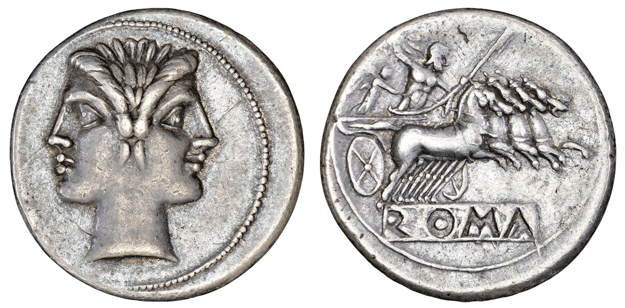
▲ Roman Republic, 225-212 B.C. Silver Didrachm (Victoriatus). Obverse: Head of Janus. Reverse: Jupiter in quadriga. ANA Collection 1990.19.2
Here are several points to consider as you begin your journey into the world of ancient Greek and Roman coin collecting.
PROS
You’re holding ancient history in your hands. We’re talking about coins struck 2,000 years ago! They bear the portraits of Greek gods and Roman emperors, and they circulated in empires that we’ve all read about in books and seen in films. Being able to hold something that traded hands in ancient Athens is an incredible experience.
Research materials abound. You could spend a week or a month just researching one piece, depending on the depths of your curiosity. Ancient Rome used their coins to deliver news and propaganda, so even if you purchase a piece that’s already attributed, you can spend a lot of time digging into the historical contexts of the time it was minted to try to figure out what that specific coin was trying to communicate to the people.
Choices, choices, choices. Like world coins at large, there’s a huge variety of ancient coins to explore. You can find everyone from Nero to Medusa depicted on them, and the reverse designs also offer myriad designs and symbology. Interested in animals? Ancient gods? Architecture? They’re all out there, waiting to be found.
Ancients present wide appeal. Let’s be honest – if you show your MS66 Morgan dollar to someone who doesn’t collect, they may not share your affection and appreciation of the coin. Ancient coins, however, seem to speak to the history buff in us all; collector or not.
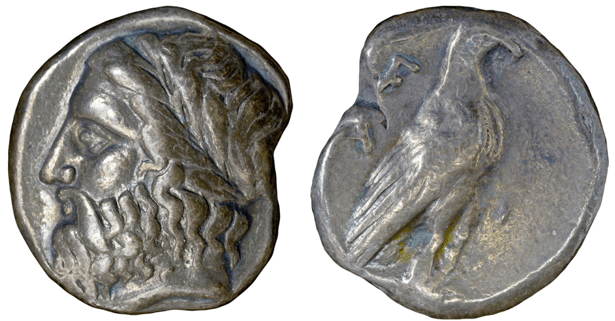 ▲ Greece, Olympia, Peloponnesus, 4th Cen. B.C. Silver Stater. Obverse: Diademed head of Zeus. Reverse: Eagle standing with wings closed. ANA 1978.52.62
▲ Greece, Olympia, Peloponnesus, 4th Cen. B.C. Silver Stater. Obverse: Diademed head of Zeus. Reverse: Eagle standing with wings closed. ANA 1978.52.62
CONS
Some pieces may be difficult to identify. If you purchase unattributed pieces, figuring out exactly what you’re looking at can sometimes be something of a challenge. Legends can be hard to read, reverse devices tough to identify, and references can be incomplete. If you’re a beginner and unfamiliar with ancients as a whole, attribution can seem intimidating. Depending on your level of dedication, it could take hours of time scrolling through databases while attempting to find similar pieces. The good news is, you’ll be accruing knowledge as you go!
Quality is a paramount consideration. As you might guess, the quality of ancients can range all over the spectrum. You may encounter lumps of copper that have no identifiable details left being sold as “coins.” Or, conversely, you could find stunningly preserved Roman gold. As a new collector, you want to be careful to avoid the overpriced low-grade pieces and focus on attributable examples. Differences can be hard to pinpoint when first starting out, but it’s well worth the effort.
“Sets” can be tough to define. Having a clearly defined set means having a list of dates and mint marks required in order to consider a collection “complete.” If you want a clear-cut goal for your collection, ancient coins might not be the best fit. You can always define a set for yourself, of course, but even then it’s not quite so cut and dry as a date and mint mark set of wheat pennies. That said, your collecting goals are yours and yours alone to shape.
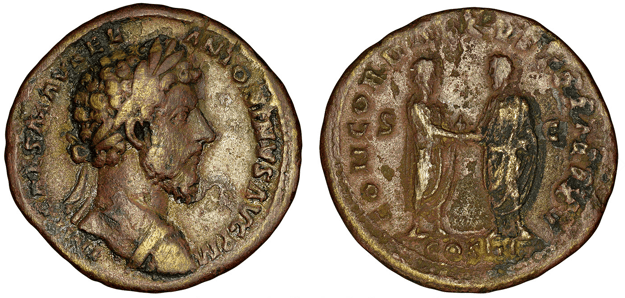 ▲ Roman Empire, Marcus Aurelius, AD 161-180. Bronze Sestertius. Obverse: Laureate head of Marcus Aurelius right. Reverse: Marcus Aurelius and Lucius Verus facing each other shaking hands. ANA 1986.155.130
▲ Roman Empire, Marcus Aurelius, AD 161-180. Bronze Sestertius. Obverse: Laureate head of Marcus Aurelius right. Reverse: Marcus Aurelius and Lucius Verus facing each other shaking hands. ANA 1986.155.130
U.S. coins, world coins and ancients all present options for a wide range of budgets and interests, and are all areas of numismatics that can grow with you as you delve deeper into the hobby. And nobody says that you have to pick just one area of collecting on which to focus! Rather, when determining where to start, ask yourself what aspects of the hobby bring you the most joy. Follow the answer to that question, and you’ll surely find what you’re looking for.
To learn more about ancient coins, explore the ANA Money Museum's on money.org.
Happy Collecting!
About the American Numismatic Association
The American Numismatic Association (ANA) is a nonprofit organization dedicated to educating and encouraging people to study and collect coins and related items. The Association serves the academic community, collectors and the general public with an interest in numismatics.
The ANA helps all people discover and explore the world of money through its vast array of educational programs including its museum, library, publications, conventions and numismatic seminars and webinars.
Introduce a Child to the Hobby You Cherish!
Introduce a child to coin collecting with the gift of ANA membership. And for a limited time, your young gift recipient (age 5-17) also will receive a package of fun collectibles!

